
Transit Briefs: Brightline, PATH, Rail Runner Express, SMART
Written by Marybeth Luczak, Executive Editor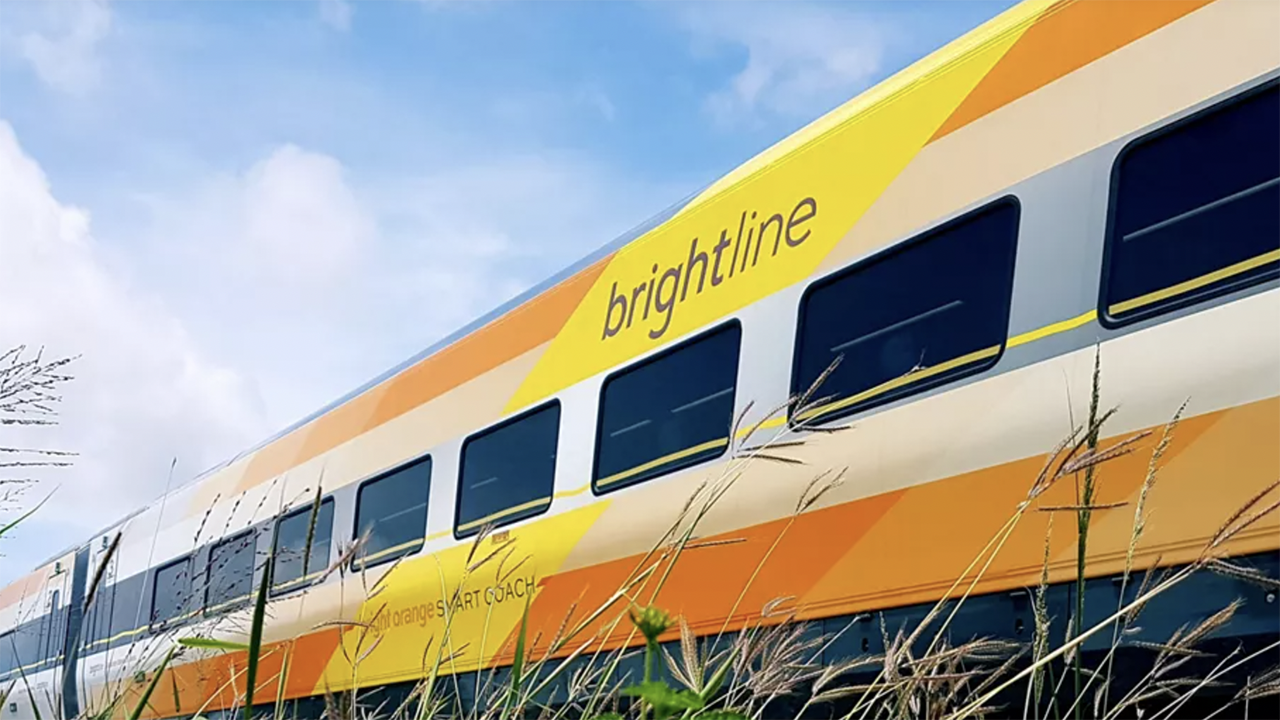
Brightline, South Florida’s private-sector passenger railroad, has received proposals from the city of Fort Pierce and Audubon Development and a joint proposal from the city of Stuart and Marin County to host new stations along the Treasure Coast, a region comprising Martin, St. Lucie, and Indian River counties. (Brightline Photograph)
Florida cities submit Treasure Coast passenger rail station proposals to Brightline. Also, Port Authority Trans-Hudson (PATH) rapid transit in New York and New Jersey achieves record ridership in November; New Mexico’s Rail Runner Express makes permanent its monthly commuter rail fare discount; and Sonoma-Marin Area Rail Transit (SMART) will allow young people and seniors to ride free.
Brightline
Brightline, South Florida’s private-sector passenger railroad, has received proposals from the city of Fort Pierce and Audubon Development and a joint proposal from the city of Stuart and Marin County to host new stations along the Treasure Coast, a region comprising Martin, St. Lucie, and Indian River counties, according to TCPalm, the digital news site for Treasure Coast Newspapers.
Brightline currently operates six stations, including the newest one in Orlando, which opened Sept. 22 (see map below). The railroad launched the first phase of its South Florida operations in 2018, connecting Miami, Fort Lauderdale and West Palm Beach. Stations in Boca Raton and Aventura opened in 2022. Construction of its 170-mile, $6 billion phase two extension from West Palm Beach to Orlando began in 2019.
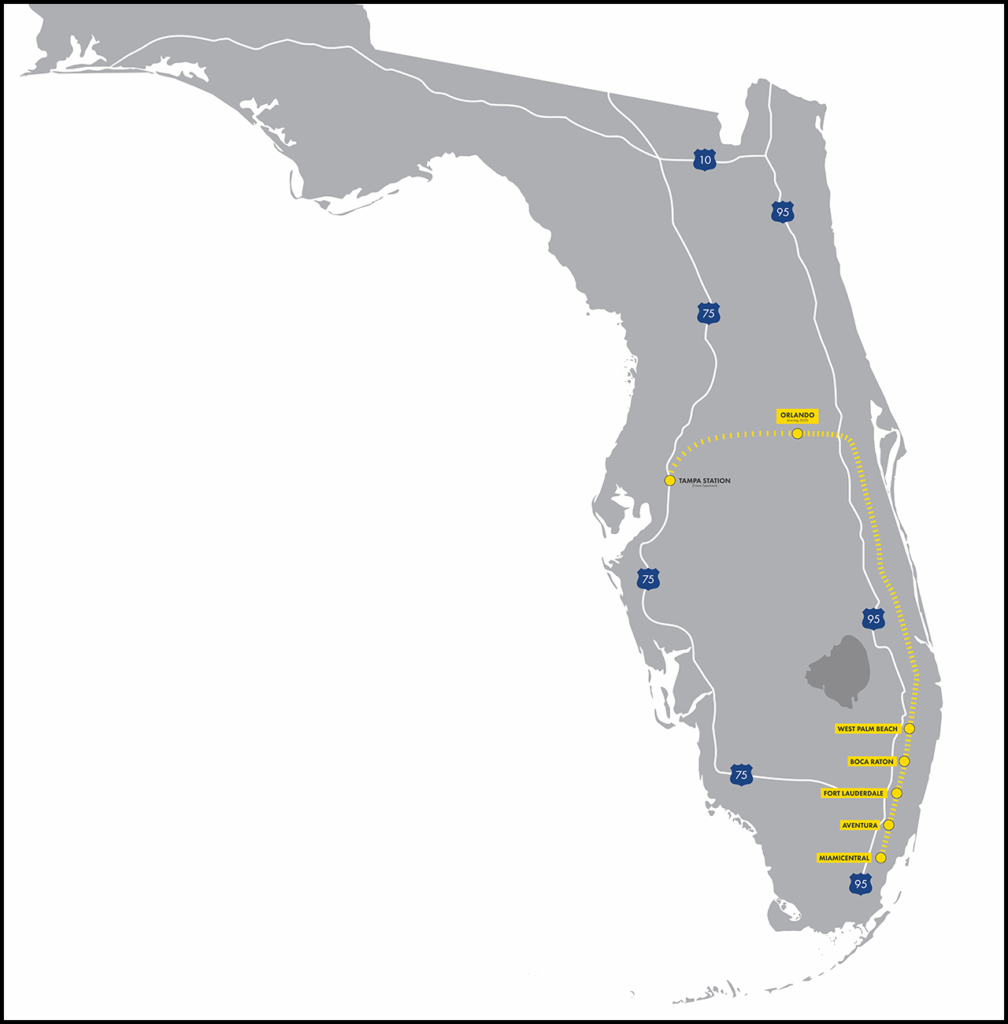
On Oct. 26, Brightline announced a Request for Proposals (RFP) for a new station along the Treasure Coast. The Gold Coast—including Miami-Dade, Broward and Palm Beach counties—lies to the south. The Space Coast, which includes Cape Canaveral and Cocoa, where Brightline branches off from the historic Florida East Coast (FEC) main, lies to the north. Until scheduled passenger service on the FEC was discontinued in 1968, trains stopped at Stuart in Martin County, Fort Pierce in St. Lucie County, and Vero Beach in Indian River County, according to Railway Age Contributing Editor David Peter Alan, who reported on the RFP.
Brightline anticipates short listing several Treasure Coast station proposals and advancing discussions/negotiations with each proposer, with the goal of entering into a contract with one proposer in early 2024. The railroad expects the station to open in first-quarter 2028.
TCPalm on Dec. 22 reported that Fort Pierce is proposing to borrow $20 million for a station on 2.37 acres along South Depot Drive; that price tag would cover adding two floors to the garage at South Second Street and Boston Avenue. The Stuart-Fort Pierce proposal set its station cost at $60 million, according to TCPalm, which noted that Audubon Development President and CEO Dale Matteson declined to estimate a station cost. The company, which “would build the project and charge Brightline $1 per year,” would also “include an aspect of Indian River State College’s culinary school, a museum, 100 luxury apartments and 465 parking spaces, Matteson said,” according to the news outlet.
Brightline imposed a deadline of Dec. 22 for station proposals. Officials declined to tell TCPalm how many met that deadline.
PATH
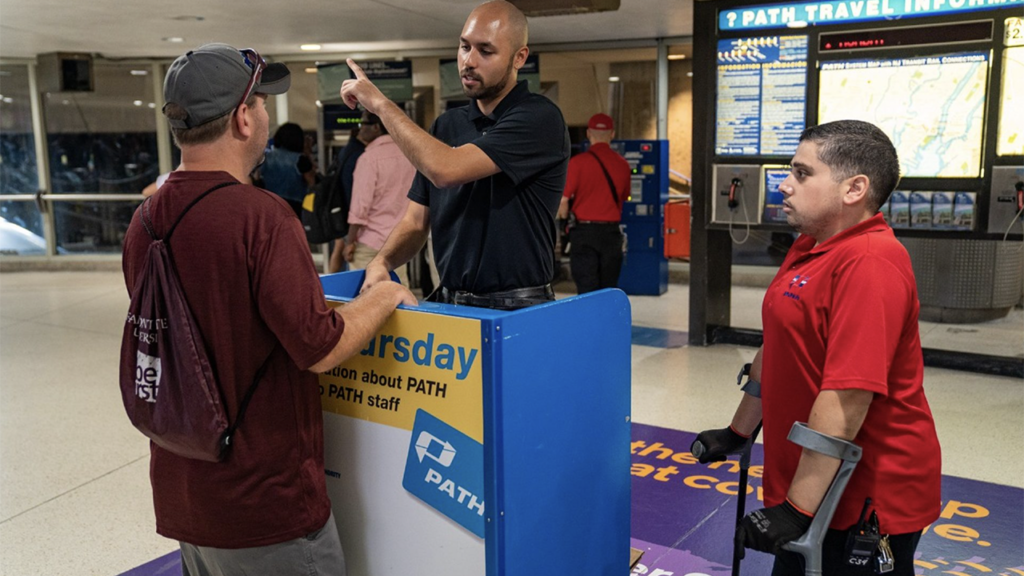
PATH on Dec. 27 reported November ridership of 4.3 million passengers—67% of the November 2019 total and the first time the rapid transit system has achieved two-thirds of pre-pandemic 2019 ridership for the same month.
PATH saw an average weekday ridership of 176,612 passengers in November 2023. It was the third-highest average weekday ridership recorded since February 2020, behind only the prior two months, September and October 2023, according to PATH.
November 2023’s total ridership dropped 10%, or 455,000 riders, from October 2023, which PATH attributed to the end of its annual peak ridership period that typically runs from late summer through early fall.
Rail Runner Express
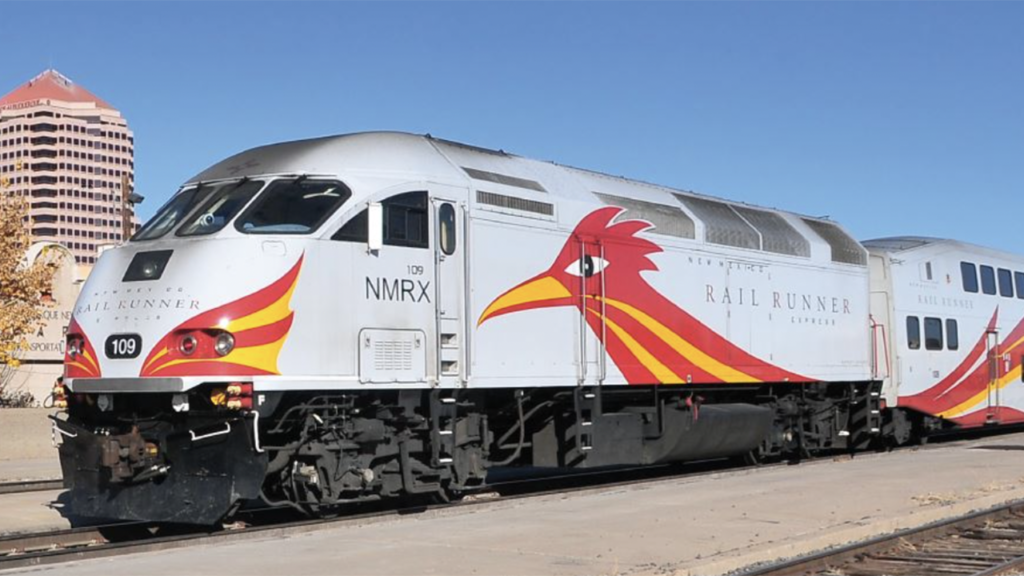
Starting Jan. 1, the 50% discount on a monthly Rail Runner Express fare will become permanent, according to Rio Metro Regional Transit District (RTD), which operates the commuter rail service between Santa Fe and Belen, New Mexico. The discount was implemented in 2021.
Rio Metro RTD said that monthly passes will vary in price depending on the distance traveled. For example, a person traveling through only one of the six zones would pay $19.50 in 2024, whereas someone traveling through all six would pay $60.50.
“We were fortunate to work with the Governor’s office and implement steep discounts on our fares right as gas prices across the nation shot way up and people were beginning to return to the workplace as the pandemic subsided,” Rio Metro RTD Executive Director Dewey Cave said in a statement to the Santa Fe New Mexican. “We think that keeping the monthly pass discounted has given many the opportunity to save some money—as well as attract others who had never commuted by rail to give it a try.”
SMART
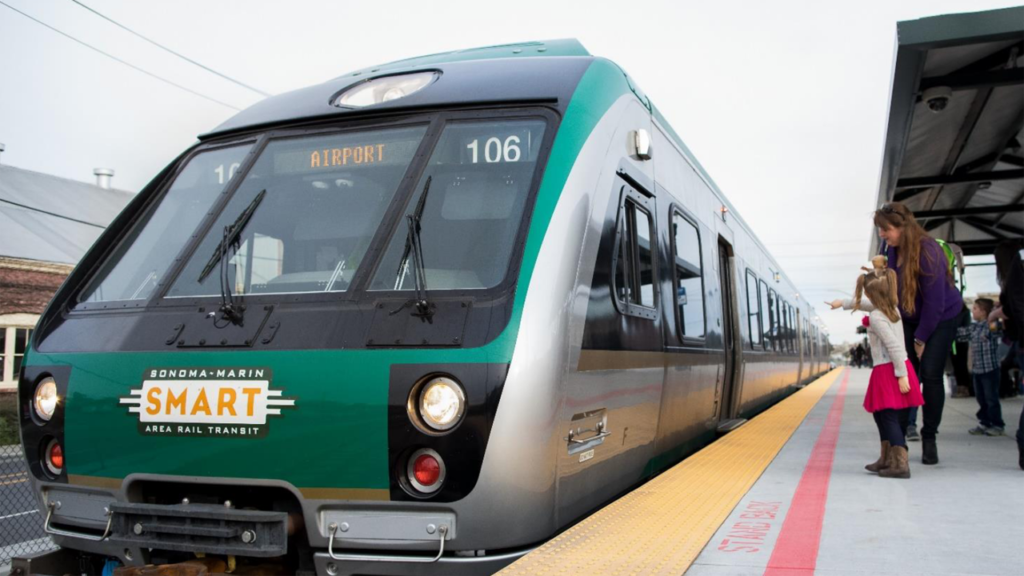
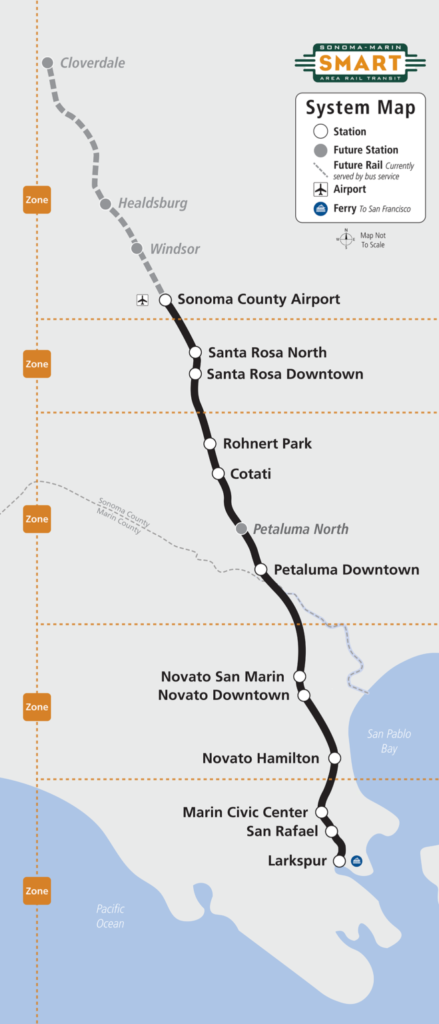
SMART in April 2024 will begin allowing riders younger than 19 and older than 64 to travel free as part of a pilot that will extend through June 2025, the Marin Independent Journal reported. The program, whose purpose is to increase ridership, will cost approximately $282,000 and was approved by the Board on Dec. 20.
SMART’s 45-mile commuter rail system in northern California includes stations in the Sonoma County Airport area, Santa Rosa, Rohnert Park, Cotati, Petaluma, Novato, San Rafael and Larkspur (see map, left). Service expansion to Windsor, Healdsburg and Cloverdale is planned.
SMART has a five-zone network. One-zone travel costs $1.50 for adults and 75 cents for seniors, young people under 19, or people with disabilities; $1.50 is added per zone for adult riders and 75 cents per zone for all other riders.
According to SMART General Manager Eddy Cumins, SMART’s free summer fare for youth program “accounted for a 152% increase in youth riders, from 12,551 in 2019 to 31,573 in 2023,” the Marin Independent Journal reported. “SMART trains have carried 730,938 riders in the past 12 months, which is 54% more than the previous 12 months, Cumins said.
“Youths and seniors represent 42% of the populations of Sonoma and Marin counties, but only 25% of SMART ridership. Cumins said there is ‘substantial opportunity to increase ridership’ with the free fare [pilot] program.”



